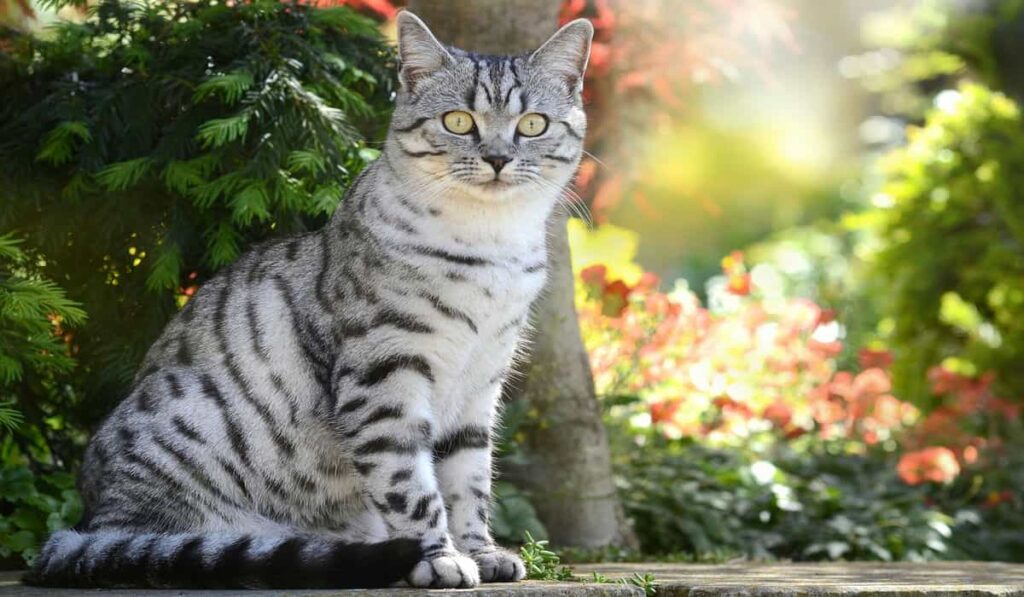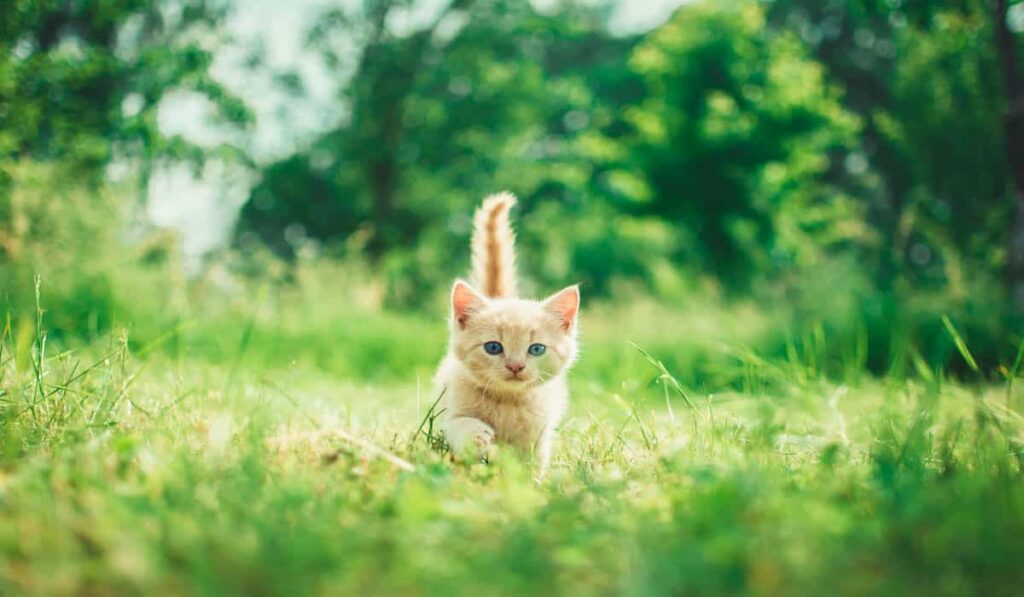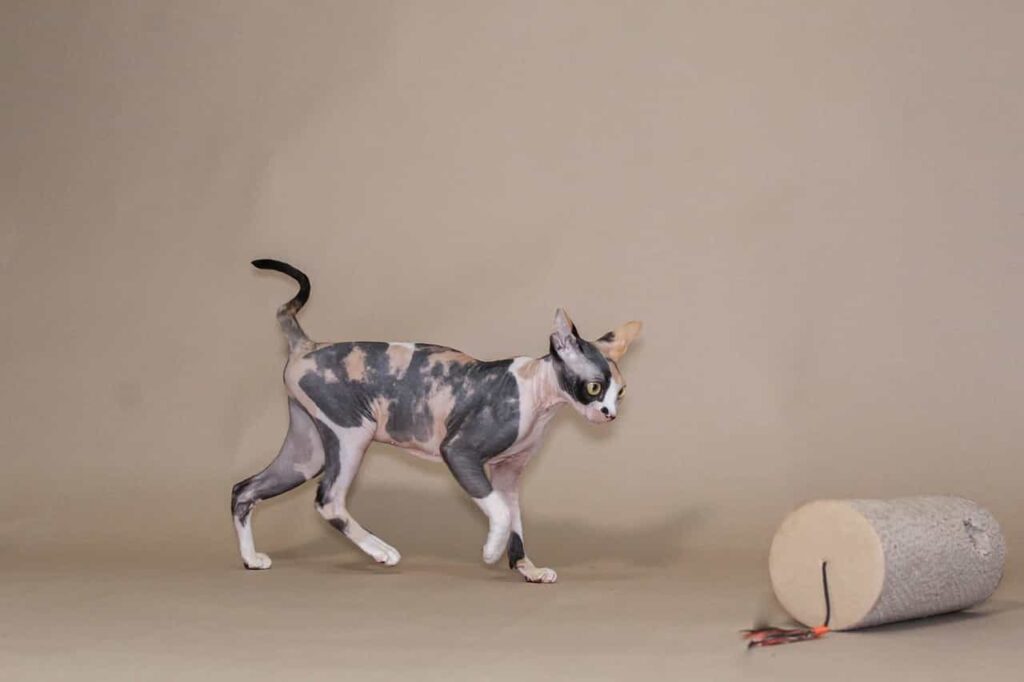The Ocelot Cat is a medium-sized cat breed, native to the forests of Central and South America, the Southwestern United States (Texas and Arizona), and the Caribbean Islands (Trinidad and Margarita).
The Ocelots have a wild look with distinctive markings of spots, stripes, and Black rosettes. The Ocelots are also known as Painted Leopard or Dwarf Leopard. That’s because their looks resemble Margay and as if there is a painting of Leopard cats.
The Ocilots love to stay in those areas that are close to water sources with vegetarian cover and prey available. That’s why they are also known as ‘Rainforest cats.
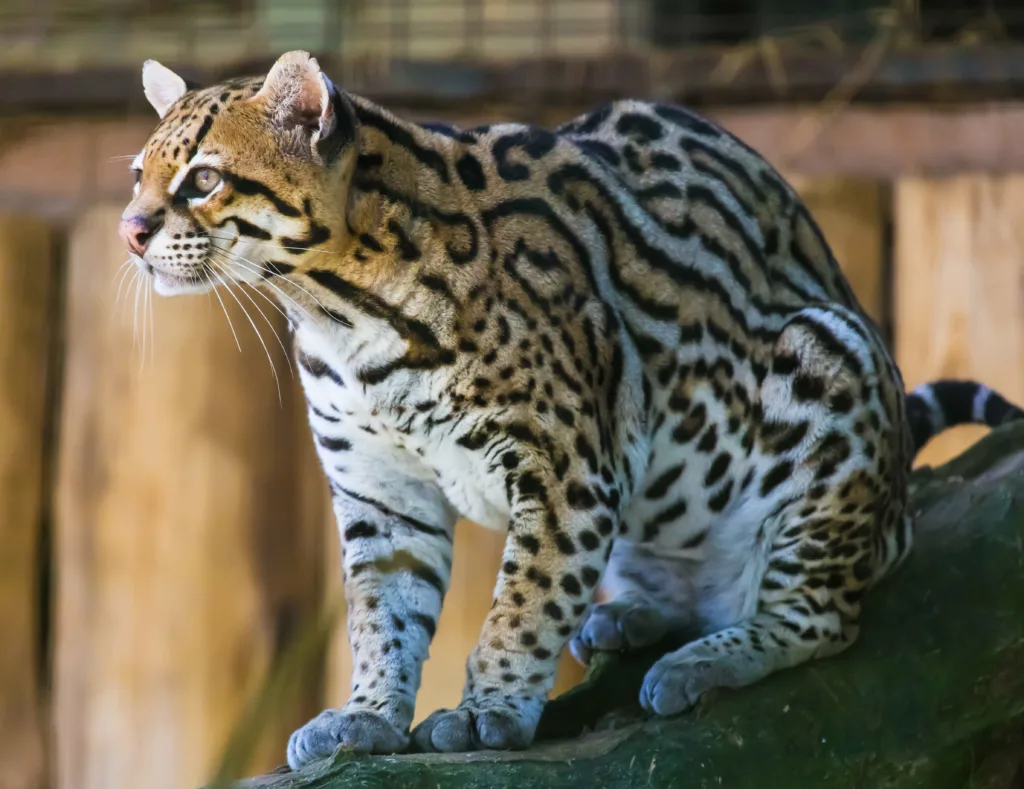

Table of contents
The appearance of the Ocilot cat:
The Ocilot cats belong to the Faidae family and the genus Leopardus. They are fully wild cats with medium size. The Ocilots resemble leopards. Their fur is unique and thick, short, and velvety.
The coats are always short with a reddish Grey or tawny Yellow color and chain-like markings of spots, stripes, and Black rosettes. The markings are more visible on both 2 sides and the backside. Some straight dark stripes run from the backside of the neck to the tip of teh tails. Each Ocelot has a unique color pattern so that it can be identified individually.
Their body length is from 36 to 54 inches (3 to 4.5 feet) and their weight is for males- 35 pounds (16 kg) and for females 17.5 pounds (8 kg). So, Ocilots are large cats.
There are small spots on heads and limbs and markings, open or closed bands, and stripes on the back, cheeks, and flanks. They have very big eyes as if they are painted eyes and give you wild and hunting vibes. The shape is round and the color is only Brown but looks golden when it is illuminated, no other eye color is available in Ocilots.
The ears of Ocilot cats are not pointed and the top ears are rounded. Their tails are long and there are dark rings on the tails. Their paws are large- it is better to say that the paws are half the length of their bodies. The inner side of the legs has horizontal streaks. Their throats are only White-colored. They have medium-sized heads. The Ocolots have 30 teeth so that they can bite with force.
The Ocilots can be confused with the Margay and the Oncila. But the ocelots are definitely bigger than the others. Though all 3 have rosettes on their coats the Ocelots have more blotched-patterned rosettes. The Ocelots are as big as the Bobcats.
Characteristics, nature, and behavior of the Ocilot cat
Don’t be fooled ever to think that the ocelots are the same as harmless domestic cats. You probably know that Ocolots are wild cats. They’re native to the forests of Central and South America, the Southwestern United States, and the Caribbean Islands (Trinidad and Margarita). So, how can they be like domestic cats? Of course, they’re harmful.
The Ocelots are solitary, nocturnal, and become active from twilight to nighttime. Their resting time is daytime. They can easily ravage flesh and they have a savage bite. Animals’ teeth and paws tend to do this. So, keep aloof from their teeth and paws.
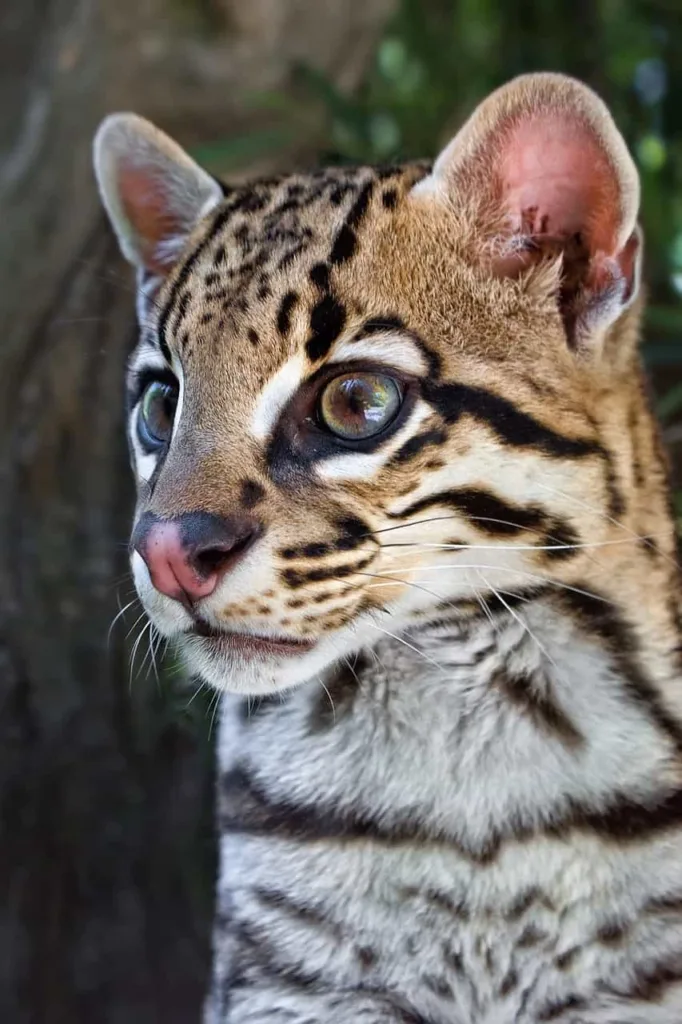

The male Ocolots mark their territory by spraying their urine and keeping feces in the open places. The females are less tend to mark territories less. There is 3 females are seen in one male territory. Their social contacts are minimal.
A male Ocelot’s territory can be from 3.5 to 46 kilometers (1.4-17.8 Square miles) while females can cover 0.8 to 15 kilometers (0.3-5.8 square miles). But a few adults are seen often and the kids stay with their parents until they become capable to stay alone.
They also take a rest under big trees during the daytime and start being active in the late afternoon. They become fully active from twilight to dawn and return to their dens before morning.
However, the important and crucial questions are:
Do the Ocelot Cat are harmful to humans?
Well, there is no record or evidence that ocelots attack humans and eat their meat. Rather they avoid human contact. If they feel any danger from humans then they can attack to save themselves and their kittens, not to do any harm to humans. It is very natural.
They don’t have the strength to attack an adult human and they don’t have any desire to eat human flesh though the flesh is flesh. But as humans can be infected by rabies by all types of felines so keeping aloof from ocelots is a better idea.
Do the Ocelot Cat attack and do harm to childrens?
The teeth and claws of wild animals are very strong, sharp, and harmful as well. So, Ocelots are not an exception. There are reports and evidence that Ocolts did harm to childrens. So, you should keep your Childrens away from the ocelots.
Never think that they are only a cat breed and your children can play and lurk with them. There is always danger larking with these kinds of wild animals.
How to protect yourself from the Ocelot cat
Usually, Ocilot cats keep aloof themselves from human touch but if they feel any danger then they can attack and their attack is very dangerous and harmful as well. They attack so quickly and so fast as if they were ready to attack and their attacks will cause the most damage.
They bite multiple times in a while and react so quickly. Of course, they don’t have the ability to decide the good and bad as humans. When you’ll deflect them from biting, they’ll bounce right back onto you. Now I’ll tell you the steps to get rid of their attacks:
Don’t run, stand in your place:
You probably know that Ocelots are very expert runners. They can run 40 miles per hour so escaping is a foolish idea. Doing this will prove that you’re prey for them. So, stand up in your place, cover your head with your arms, and scream loudly so that the ocelot gets dissuaded and gets stopped from assaulting you.
Protect the sensitive areas of your body:
Protect your neck, armpit, and obviously your eyes. The ocelots are very expert to attack sensitive body parts. Though they can’t kill you able to make serious damage.
Don’t jark them away if they beat you:
when an Ocelot bites you then you shouldn’t pull your attacked body area back because it will cause more damage, your vein can be sliced, and tissue can be seriously damaged. The situation can become worse.
Fight back:
Always remember that you are larger than the cats. So, keep the advantage. Fight against the cat whatever you have around you. So that, the Ocelot can realize that he should leave now. You should also seek help. Make a noise so that if anyone is nearby can come to save you and if another person comes, the Ocelot will definitely run away.
Let them go:
If you see that the Ocelot is trying to give up the battle and run away then let it do this. Remember that they’re animals and We’re humans. So, we shouldn’t fight against them if they’re about to leave.
Is there any evidence or report that any Ocelot Cat killed any human?
There is no evidence or reports that any person was killed by an ocelot. What can they do most? If they get any artery or vein while fighting, then they can damage it, nothing else. But it is a serious matter too. So, never take their attacks lightly, stay away from them. The wilds can’t live with us. They are beautiful only by seeing and from a safe distance.
The etymology of the Ocolot cat
The name Ocelot came from the Nahuatl word Oceloti. The word refers to Jaguar rather than Ocelot. There is another source for this name and this is the Latin word Ocellatus. That means little eyes or marked with eye-like spots. This name is because of their spotted coats.


The ocelot has other names according to their native places such as- Cunaguaro (Venezuela), Gato Onza (Argentina), Gato Tigre (Panama), Heitigrikati (Surinam), Jaguatririca and Marcaja (Brazil), Manigordo (Costa Rica and Panama), Mathuntori, Ocelot, Onza, Pumilo, and tiger cat in Belize, Tigrecilo (Bolivia), and Tigrilo in Columbia, Guatemala, Ecuador, and Peru.
Taxonomy of Ocelot cat
The scientific name of Ocelots was Felis Pardalis. It was proposed by Carl Linnaeus in 1758. Its genus is Leopardus, proposed by John Edward Grey in 1842. The Ocelots have spotted skin that resembles Leopards. So, Mr. Grey proposed the name.There are so many specimens of Ocelot cats that were described in the 19th and 20th centuries.
Sub-species of Ocelot cat
The Cat Callisfiaction Task Force of the International Union of Conservation of Nature (IUCN) Cat specialist group noticed in 2017 there are the following sub-species that ocelots cats have at present:
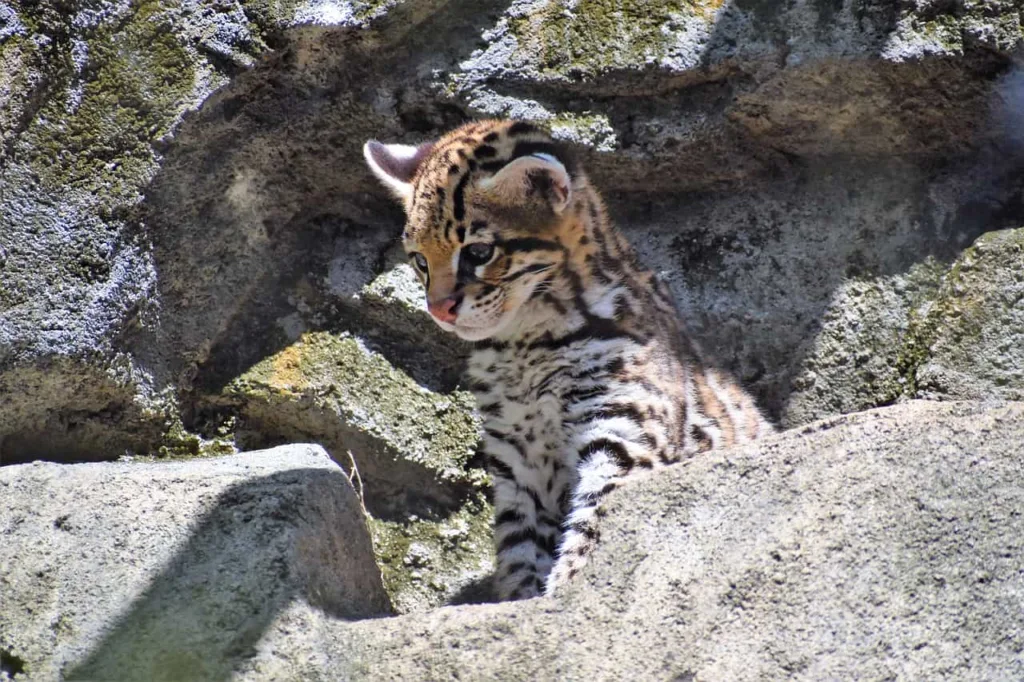

The sub-species are-
- Leopardus pardalis- which has Grey fur. Its ranges are extended from the north side of the USA (Arizona and Texas) to Costarica (middle America).
- Leopardus pardalis mitis- Which has Yellow fur and is larger than pardalis. It is available in South America, especially in Argentina and Paraguay.
- Leopardus pardalis pardails: Amazon Rainforest.
- Leopardus pardalis aequatorialis: the Nothern Andes and Central America.
- Leopardus pardalis albescens- Mexico and Southwestern texas.
- Leopardus pardalis melanumas- Venezuela, Guyana, Trinidad and Tobago, Barbados, and Grenada.
- Leopardus pardalis nelsoni- Mexico.
- Leopardus pardalis pseudopardails- Columbia.
- Leopardus pardalis puseaus- Ecuador.
- Leopardus pardalis sonoriensis- Mexico.
- Leopardus pardalis Steinbach- Bolivia.
Distribution and habitat of the Ocelot cat
Distribution means in which area the Ocelots are available or the residing places of the ocelots. The ocelot’s distribution range is from the Southwestern United States to the north side of Argentina. A range of about 3000 meters (9800 feet).
In the USA, it is found in the states of Arizona and Texas are totally extirpated from Louisiana and Arkansas. In Florida, the Fossils of Ocelots were found. There is a Fossil site in Florida, named the Reddick Fossil site. The Fossils are found there. The ocelot’s habitats are tropical forests, thorn forests, Mangrove forests, rainforests, and Savanahs.
There was a survey conducted on the longest jungle in the world the Amazon in 2019. The survey tells us that the Ocelots love to stay near water sources with vegetarian cover and availability of prey. They avoid other predators, roads, highways, human settlements, and highly elevated areas due to the lack of prey.
If the Oocelot’s habitat is in an area where they share the area with humans and Cougers then they tune their day activities and come out after sunset. That means the ocelots of that area are nocturnals. It shares a large part of its habitat with Jaguars, Jaguarundis, margays, Oncilas, and Cougars.
Ecology of the Ocelot cat
The ocelots prefer to live in tropical forests, thorn forests, Mangrove forests, rainforests, and Savanahs. They ate tend to stay near water sources with a vegetarian cover so that they can get enough prey, avoid humans, and other predators.
The Ocilots are super swimmers and agile jumpers. Though they live near water sources but seldom swim. If they can see coveted prey nearby then they swim to get get it. They can climb trees and high places. They also love to take a rest under the big trees in day time while they’re waiting for afternoon time. The Ocelots live in their own dens that are escaped from others.
As I have mentioned already that the population of Ocelots is dense near to water resources and covered areas by rainforests and other types of forests. The highest density of population was recorded in Barro Colorado Island, it was 1.59- 1.74/km in 2014. It was greater than the Northwest Amazon of Peru in 2010. The density was 0.984/ km.
Hunting and diet of the Ocelot cat
The ocelots follow their prey. They walk at a slow speed of 0.3 kilometers/hour for predating. As an alternative way, they can walk for 30 to 60 minutes at the same site and wait for the prey. Sometimes they wait on the high branches of trees to get prey. If they become unsuccessful to predate their meal, then walk again 0.8-1.4 kilometers.
The favorite place of their hunting is the vegetarian covers. They avoid open areas and moonlit nights for hunting so that the pery can’t see them. As you know that all cats are carnivorous including Ocelots. So, they pery small mammals such as rodents, mice, hamsters, Guinea pigs, birds, Lagomorphs, Armadillos, Oppussumes, Crustaceans, insects, Reptiles, and even fish.
They eat immediately the pery after hunting but remove bird feathers first. The Ocelots prey on animals less than 1 kg (2.2 lbs) and it’s very rare that they attack big animals such as deer, sheep, Peckeries, anteaters, monkeys, and Iguanas. They require 600-800 grams (21-28 oz) daily to feed themselves.
The climates decide the diet of ocelots. Such as they prefer rodents and Iguanas in the dry season in Venezuela and eat land crabs in the rainy seasons. They have similar hunting and dieting in Brazil. They hunt Margays and Oncillas there.
Reproduction and lifecycle of the Ocilot cat
The Ocelots can mate any time of year. Their peak matting seasons vary from area to area. Such as – in Argentina and Paraguay the peak season is Autumn and in Mexico and USA-it is Spring and Winter seasons-the observation say that.
The Estrus period recurs every 25 days and lasts ⅘ days when the female Ocelot isn’t pregnant. The study shows that the male ocelots produce sperm highest in the Summer in the Brazilian Amazon area. The captive ocelots spend more time together while mating. They eat less during reproduction time. The breeding of Ocelot cats is quite difficult.
After a 2 or 3 months gestation period, the female Ocelots give birth to one to three litters. They give birth in their den covered with covered by dense vegetation which is their fav place.
The Ocilot kittens
The Ocelot kittens are born with a weight of 200-340 grams. They are born with spots and stripes. At the birthtime, they have Grey backgrounds but as they grow up their coat colors change to golden.
The study conducted in the texas area revealed that a mother Oceot keeps her kittens in a den from 13 to 64 days and changes the den 3 times. It is a very common characteristic among all feral and wild cats that they shift their kittens from one place to another till they get adults.
The eyes of baby Ocelots open 15 to 18 days after birth. When they reach 3 months of their age, they start leaving the dense and live till 2 years of age with their mothers. After that became independent and start dispersing and establishing their own territory. As the ocelots are wild cats so they live a long life of almost 20 years and it is almost the same in all habitats and areas.
Threats on the exotic ocelot cat
Not only ocelots but also all wild animals are a threat by being demolished due to the fur business, fragmentation and loss of habitats, lodging, and poaching of prey species. As the human population is increasing and they need new places for habitation so wildlife is getting endangered and threatened.
In Texas, the habitat of vegetarian cover is being decreased due to farming and agricultural activities. As the habitats are being fragmented and turning into small pockets so the Ocelots are starving due to lack of pery and falling dead.
The ocelots are trying to expand their habitat as hunting is getting tough. So their habitats are coming near the highways and to those areas where humans live. So, the ocelots are falling into road accidents and being hit by cars and vehicles. Road accidents are increasing worryingly over the years.
The fur trade of Ocelots and Jaguars became flourished in the decades of 1960s and 1970s of the 20th century. In 1970 the Fur business reach its peak level in the USA. in that year 1,40,000 skin trade was done. This was followed by on prohibition on the commercial trade of spotted cat skins in Brazil and the USA.
The European Economic Community banned the importation of Ocelots skin in 1986 and the ocelots were included in the Appendix of The Convention of International Trade in Endangered Species of Wild Fauna and Flora (CITES) in 1989. But the hunting and trade business wasn’t ended up. It is still a threat to the Ocelot population and survival.
There is another threat to the ocelot and this is the international pet trade. The mother ocelots are being killed and the kittens are being sold to tourists. Though it is banned in several countries the trade isn’t stopped. Even ocelots are sold in local markets of some South and Central American countries.
The Conservation for the Ocilot cat
Though conservation can’t stop hunting and illegal business of wild animals there is some conservation for Ocelot cats. such as
The international union for Conservation of Nature (IUCN) red listed Ocelots as the least concerned animal as it is distributed widely in 3 Americas. The hunting of ocelots is banned in Argentina, Brazil, Bolivia, Columbia, Costa Rica, French Guinea, Guatemala, Honduras, Mexico, Nicaragua, Panama, Paraguay, Surinam, Trinidad and Tobago, USA, Uruguay, and Venezuela and hunting is regulated in Peru.
According to the census- in 2013, the global population of Ocelots is 40,000 mature cats. The population was stable in some Amazon areas in 2013. In 2012, a survey estimated in the sub-tropical region of Argentina. The Ocelot population was 8000. The survey was conducted only in oil palm landscapes and Andean valleys.
What about the USA?
The population of Ocelot has decreased drastically in Texas according to a 2014 survey. The number is 50-80. The small number cause to inbreeding and low genetic diversity. But US Fish and Wildlife Service didn’t acknowledge and list the Ocelots as endangered.
Though US Fish and Wildlife Service, Texas Park and Wildlife Department, and The Nature Conservancy are responsible for this job they are not concerned about that. Both in Arizona and Texas the Ocelots are in danger. Nature serves to consider the Ocelots to secure globally.
The condition of Ocelot Cat in captivity
In Brazil, there was a Species Survival Plan was established by The American Zoo and Aquarium Association in 2006. There are 16 Ocelots in the North American Zoos. The 16 Ocelots were representing their founders and their offspring. Not all the litters were original Ocelots, some of them were produced by using artificial insemination. There are confiscated and trapped Ocelots kept by the authority in the Emperor Vally Zoo in Trinidad and Tobago.
The relationship between ocelot Cat and humans
The ocelots and humans rarely become friends. Humans hunt ocelots for their furs and meat and cell in the Black market. So, how can the Ocelots become friendly with humans? Not only hunting but also the devastation of the vegetarian covers done by humans is a big threat for the painted cats.
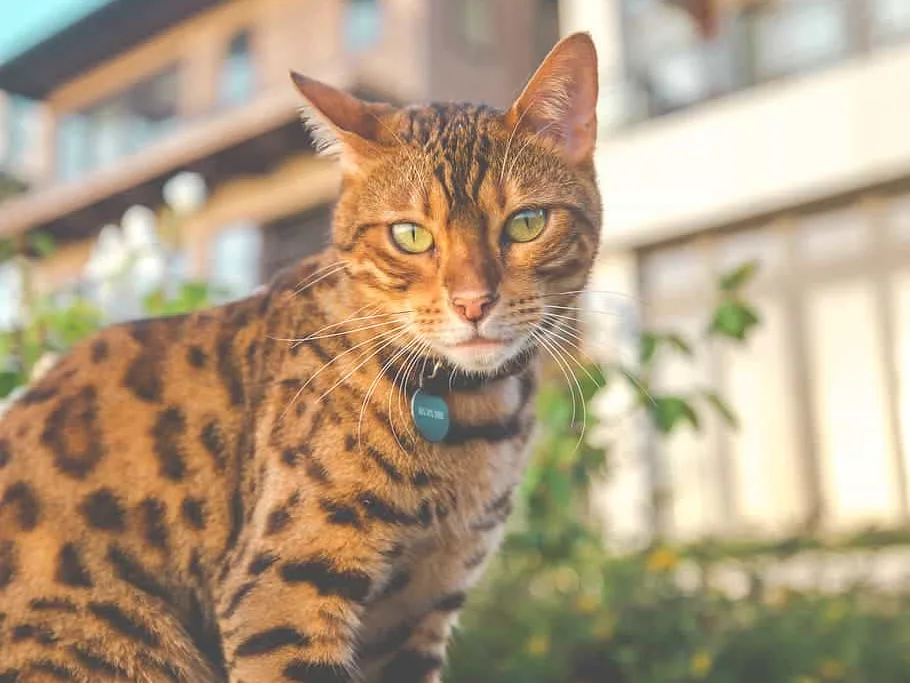

If humans destroy the habitats of wild animals then the interaction between humans and other animals will remain just like hide and seek.
Are Ocelot Cat eligible for domestication?
First of all, the domestication of Ocelots is totally illegal.
Ocelots are never eligible for ordinary people especially, for those people who have toddlers and children. Because Ocelots are wild cats, they don’t have the training of sociability and the experience to live with a family. So, ordinary people must keep aloof from Ocelot cats.
Ocelots can be kept for breeding, showing, and of course, in zoos because they have the training of handling wild animals and a license to keep them. If any solitary person lives in a jungle area then he can keep Ocelot’s cats but he must have permission to do so.
Besides this, if you keep an ocelot as a pet, then you have to take a full-time job to care for and handle it. suppose, you have permission and keeping Ocelots is legal in your area but taking care of Ocelots is very much time-consuming because they need a lot of health care. So, if you are not a wild animal professional, then it is almost impossible for you because you have your own profession and personal life.
Taking care of the Ocelot cats and kittens
Well, taking care of an Ocelot is never an easy task as are wild animals just like pet cats. So, you can’t train them like the other cats and make them sociable. There is special training needed to handle taking care of wild animals.
However, if you are desperate to have an Ocelot then the first and foremost duty will be to arrange an open place for them so that they can roam around even at night. As they are usually nocturnal so, they are used to roaming around after twilight.
The second duty will be to arrange some interactive toys so that they can stay busy when they are staying inside the house. As they are super hunters and agile jumpers so they can destroy your household. So, be alert about that. As the cats are carnivorous so you have to supply them with at least 600-800 grams (21-28 oz) of fresh meat daily as you know that wild animals are used to eating fresh meat.
Taking care of Ocelot Cat Babies
The baby Ocelots are more dependent than any other wild kittens and spend a longer time (2 years) with their mothers. They also take more time to wean. For this reason, after weaning they are used to sucking the fingers of the caregivers. So, you have to help the kittens to get rid of their finger-sucking habit. You can treat them or provide with them some interactive toys to play with.
What about spaying and neutering the ocelot cat
When you’re having a pet cat then I will recommend you spay (females) or neuter (males) because the population of other pet cats is not endangered and you are not supposed to take responsibility for their kittens and endure their territorial behavior. So, making them sterile is very normal. But when the question is about wild cats and ocelots as well then you shouldn’t make it sterile. The population of ocelot is in danger and decreasing due to hunting and lack of habitation.
So, if you make an Ocelot sterile then you are doing a harm to the population. The Ocelot Conservation Program in several countries doesn’t allow it to do so. In that case, you must talk to the relevant authority or the veterinarian to get the best solution.
Toilet behavior of Ocilot Cat
I won’t recommend you give litterbox training to the ocelots as they have a very nasty habit and the habit is eating cat litter. You have to work hard to get used to them using litter boxes or newspapers. As they are wild and you have provided an open place for them so let them do it naturally.
Veterinarian care for Ocelot cat
Now, let’s talk about the veterinarian care of ocelot cats. When they live in jungles they don’t need any vet care but surprisingly when they come to among the human they become prone to some health issues and diseases.
Ordinary veterinarians may not have special vet training because it is not mandatory for them. So, make sure first that your vet has special animal care training. If you don’t find such a vet in your locality then go to the Zoo. besides, you also can go to the feline behaviorist. They have knowledge about the psychology and treatment of wild animals.
Ocelot Cat culture
Though Ocelots are wild they are very much related to the South American culture since the Aztec and Incan civilization. The people of this civilization depicted Ocelots with their mythology and art such as artistic mediums from Moche ceramics to murals, architectural details, and landscapes. Ocelot bones are made into thin and pointed instruments to pierce ears and limbs for ritual bloodletting.
There are some statues of felines that resemble Ocelots. Archeologist Zelia Nuttall described that there is a statue that depicts an Ocelot or another feline excavated in Mexico City and it has a close relation to Aztec Civilization.
According to the well-known myth Aztec Deity Tezcatlipoca was cast down from heaven by Quetzalcoatl. Tezcatlipoca fell into the water and transform himself into an Ocelot cat and arose to kill some monsters. Zelia Nuttall presented a photograph of a sitting person to establish her claim.
However, Ocelots are the pets of some famous figures of History such as Salvador Dali, a Spanish painter (1904-1989). He was used to going on foreign trips with his ocelot Babou. Opera singer Lilly Pons and musician Gram Parsons also have an Ocelot cat as a pet.
The list of US states and restrictions about Ocelot cat
I am giving you a clear concept that how the state laws react when the question of having Ocelots and other wild animals. In some states, keeping wild animals is totally banned, in some states, you must have a license to have them, and in the rest of the states either hybrids are allowed or the government limits the number of exotic cats. So, check the rules and regulations of your state:
| The Name of the state’s | Situation according to the Law | Follow-up comments |
| Texas | Permission is required. | The number of exotic cats is certain. |
| Alabama | Permission is required. | No private ownership is allowed and you can’s import Ocelots and other exotic cats as their outlawed. |
| Florida | Permission is required. | A license is needed for the allowance. |
| Arkansas | Not clear. | Up to 6 exotic cats are allowed to keep but if you take the exotic cats out of Arkansas, then you must show proof of ownership. |
| California | Exotic cats are totally banned including ocelots. | Only hybrid cats are allowed. |
| Delaware | Permission is required. | Hybrid cats also required permissions. |
| Florida | Permission is required. | A license is needed for the allowance and only for small wild cats. |
| Indiana | Permission is required. | – |
| Iowa | – | Some particular cat breeds are permitted. |
| Kansas | Allowed | Very dangerous pets are not permitted even if they are small. |
| Maine | – | Permission is needed for some particular wild animals. |
| Massachusetts | Allowed | You can keep a hybrid but a domestic animal should be with it. |
| Mississippi | Allowed | Ocelots and African Servals are allowed to have. |
| Missouri | Permission is required. | Only small cats are permitted to own. |
| Montana | Permission is required. | Only small cats are permitted to own. |
| Nevada | – | Only small cats are permitted to own. |
| North Dakota | Permission is required. | Any non-domestic animal needs permission. |
| Ohio | – | Only Bobcats are permitted, African Servals and ocelots are not. |
| Oklahoma | Permission is required. | You can own exotic cats with certain numbers. |
| Pennsylvania | Permission is required. | You can own exotic cats with certain numbers. |
| Rhode Island | – | You need permissions for some animals, not for all. |
| South Dakota | Permission is required. | You can own exotic cats with certain numbers. |
| Tennesse | – | There are no regulations for owning wild cats. |
Some facts about Ocelot cat
- Though Ocelots are found in North American they are the main indigenous of Central and South America. The Rainforest of the Amazon area and the canopy of trees and warm climate is the perfect habitat for solitary ocelots. They are nocturnal so rainforest is very much suitable for them.
- There is a belief in the ancient Incan and Aztec civilizations. According to the well-known myth Aztec Deity Tezcatlipoca was cast down from heaven by Quetzalcoatl. Tezcatlipoca fell into the water and transform himself into an Ocelot cat and arose to kill some monsters. So, the ancient Peruvians worshipped Ocelots.
- The name Ocelot came from an Aztec Word ‘Tlalocelot’. That means, field tiger
- Every Ocelot cat’s coat is unique and it can be identified individually. You won’t see 2 ocelots with the same coats. They have spots and rosettes with dark Brown to Black and the fur is Yellowy Brown or Golden Tan but the coat patterns are different from cat to cat.
- The Ocelots are picky in their food habits. They are carnivorous. They don’t eat anything without animal protein. They pery mammals, birds, fishes, and even ground crabs. The main thing is the food should be animal protein, nothing else.
- The Ocelots are nocturnal. It is very common among wild animals that they are sleeps in the daytime and get awakened at night. Except for the birds, all wild animals are nocturnals. There is another reason for Being nocturnal is the prey can’t see them at night and hunting will be easier than in the daytime.
- The female Ocelots are called queens. The male Ocelots make their territory in the jungle and keep ⅔ females as their partners. So, they are called queens.
- The ocelots are very vocal cats. Especially, in mating seasons, they produce varieties of meowing, yowling, and growling to send signals to their queens. So, ocelots are resourceful communicators.
- They are double in size the domestic cats. That means they are large cats. Their body length is from 36 to 54 inches (3 to 4.5 feet) and their weight is for males- 35 pounds (16 kg) and for females 17.5 pounds (8 kg).
- Their raspy tongues help to remove the bones from the meat.
- Sometimes Ocelots dare to hunt larger animals such as deer, sheep, Peckeries, anteaters, monkeys, and Iguanas.
- Ocelots hunt many animals and they are got hunted by other animals like Puma, Jaguar, eagles, and large snakes like Anaconda.
- They are great swimmers but seldom do so.
- They keep active themself almost 12 hours a day and can walk or run up to 7 miles for hunting.
- There is a very funny thing about the coat pattern of Ocelot cats. The funny thing is when they reside in the Amazon area their coat pattern changes to patches or spots so that they can mix up with the ground and can’t be visible to the prey.
- During the day time thay take a nap just like domestic cats and become active in the afternoon.
Albino Ocelot cat
Albinism means the absence of Melanin in the human and animal bodies. Melanin is responsible for the skin, eye, and hair colors of our bodies. Albinism protects the production of Melanin and pigments. People with Albinism are reduced amounts of melanin or no Melanin lifelong.
However, there are other Albino cats in the world. Albinism is found in the Exotic cat Ocelot too. The first Albino cat was seen in the conservation park in Columbia. The first Albino was taken as a kitten its weight was 440 grams and probably blind. The Albino Ocelot is a type of wild cat. The fact is that the Albino Ocelot is a rare cat and took birth with the whimsical character of nature.

